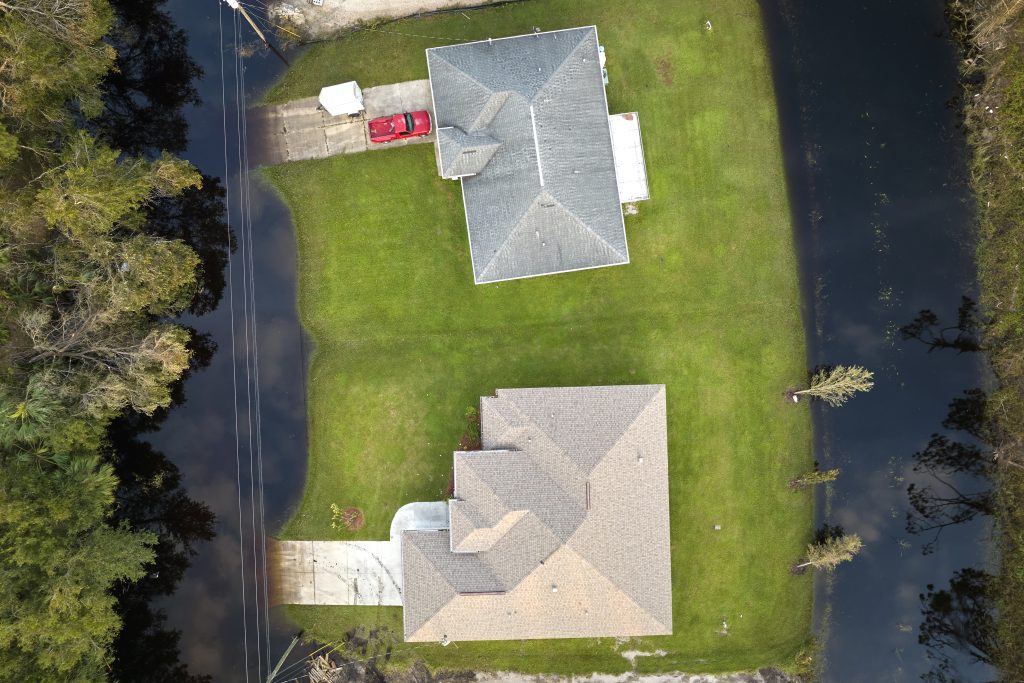Did you know that more than 14 million homes are damaged by natural disasters in the United States alone each year? In total, damages can top more than $50 billion per year. It’s crucial to protect your property and family. Fortunately, there are steps you can take to reduce the risks associated with natural disasters. Let’s take a look at how you can mitigate risks.
If your property has recently been damaged by a natural disaster, it’s smart to contact a public claims adjuster. We can work with you to insure that you get the insurance settlement you deserve.
Make Sure You Have the Right Insurance Plans
The best preparation in the world can’t wholly eliminate the risks posed by natural disasters. Given that, the best home and property protection, in the long run, is making sure that you’re fully covered by insurance.
Standard insurance policies often don’t cover every natural disaster. For example, a standard homeowner’s insurance policy will not cover damage caused by floods. Instead, you must take out a separate flood insurance policy.
Unfortunately, even if someone is fully insured, they may not get what they deserve when it comes time for insurance to pay out. That’s because insurance companies often try to keep settlements as low as possible. By working with public adjusters, you can often increase your insurance settlement.
Trim Trees and Mitigate Other Risks
Falling trees and tree limbs are one of the gravest threats to homes and people. If a tree overhangs your house, there’s a serious risk that it could one day topple over and onto your home. Even if a tree doesn’t overhang, strong winds could knock it into your home or other building.
A falling tree can damage more than just the roof and exterior of your home. The damage could let rainwater in, resulting in water damage and the like. Even worse, a family member might be injured when the tree falls.
Trees aren’t the only risk either. Your property might rest at the bottom of a hill, for example. Rain, wind, earthquakes, or another event could knock large boulders loose higher up on the hill. Then they could tumble down and into your home or other property.
You can often have rocks and boulders removed. As for trees, many companies will trim trees, or can remove them entirely. Dead trees are often the biggest risk, but strong storms can knock down even mature, healthy trees.
Watch Out for Wildfire Hazards
The United States has experienced severe wildfires these past few years. Unfortunately, prolonged droughts have made conditions ripe for uncontrolled fires. Generally speaking, fires spread faster if there is a lot of dry kindle to burn. This could include dry leaves, grass, and underbrush, dead trees, and heaps of trash.
It’s smart to plant fire-resistant plants like oak trees and yucca. It’s also wise to clear out underbrush and dispose of dried leaves. If you can’t afford to water grass or local regulations disallow it, you may want to get rid of grass altogether. Dry grass can burn quickly even if you trim it. Gravel and the like may be the safer bet.
Homeowners who live in regions prone to wildfires should have an evacuation plan. Fires can spread rapidly, so you should know which routes may be safest. If a fire is burning in your area, it’s smart to pack ahead so you can leave quickly if need be.
Make Your Home Your Castle
Ahead of hurricanes and other severe storms, you may see people boarding up windows and doorways. It’s smart to plan ahead and install storm shudders on your windows, as well as storm doors on entranceways. This way, you can quickly close them ahead of an approaching storm. You may still want to nail the shudders shut with a two-by-four or something similar, but either way, shudders save time.
If you live in an area prone to flooding, you may want to raise your primary living floor off the ground. Of course, if your home is already built, that’s difficult to do. If you’re building a new home, however, you’ll have more leeway.
Impact-resistant glass is another great idea. Even if debris strikes the glass, it may hold firm.
Have an Emergency Plan and Supplies
Damage to a property is unfortunate, but what is a far graver concern is protecting the well-being of your family. It’s smart to plan ahead for the natural disasters that are common in your area. Your entire family, including children, should know what to do when a disaster strikes.
If you live in a region prone to wildfires, you should already have an idea of which roads you can take to get to safety. Likewise, it’s smart to know which roads are most likely to become flooded during heavy rain. Then, you can avoid potential flood waters. Having bottled water and non-perishable food on hand is also wise in case you get trapped in your home, say during a blizzard.
During Earthquakes, you’ll typically want to hide under a sturdy desk or doorframe. With tornadoes, you’ll want to either hide in a basement or if that’s not available, in an interior room in your home. Knowing all of this stuff yourself is important. It’s crucial to also teach children what to do during an emergency.
Let’s take a look at the most common natural disasters in the United States so you know what to prepare for.
If you or your loved ones have recently been impacted by a natural disaster, contact MAXOUT to speak with a public claims adjuster. We can make sure that you get the insurance payout you deserve.
The Most Common Natural Disasters in the USA
The United States experiences a variety of natural disasters. These events can cause varying degrees of damage. Let’s look at some of the most common natural disasters in the U.S.
Hurricanes
Hurricanes are powerful tropical storms that form over warm ocean waters and can bring heavy rain, strong winds, and storm surges. The Atlantic and Gulf Coasts are particularly vulnerable to hurricanes. Many of the most destructive storms in U.S. history have been hurricanes, such as Hurricane Katrina (2005) and Hurricane Harvey (2017). The damage caused by hurricanes can range from millions to billions of dollars, depending on the storm’s intensity and the areas affected.
Tornadoes
Tornadoes are violent, rotating columns of air that extend from thunderstorms to the ground. The United States experiences more tornadoes than any other country. Tornadoes can cause extensive damage to structures, infrastructure, and agriculture, with annual damages costing hundreds of millions, if not billions.
Floods
Flooding occurs when water overflows onto normally dry land, usually due to heavy rainfall, snowmelt, or storm surges from hurricanes. Flood-prone regions in the U.S. include the Mississippi River Basin, the Gulf Coast, and parts of the Northeast. Floods can cause widespread damage to property, infrastructure, and agriculture. The annual costs of flood damage in the U.S. average around $8 billion.
Wildfires
Wildfires are uncontrolled fires that burn in forests, grasslands, and other natural areas. They are common in the western U.S., particularly in California, where a combination of dry vegetation, high temperatures, and strong winds can fuel large fires. Wildfires can cause significant damage to property, infrastructure, and natural resources, with annual costs in the U.S. reaching billions of dollars in recent years.
Earthquakes
Earthquakes occur when tectonic plates shift, releasing energy in the form of seismic waves. The West Coast, especially California, is most at risk for earthquakes due to its proximity to the San Andreas Fault. However, earthquakes can strike pretty much anywhere. Earthquakes can cause widespread damage to buildings, infrastructure, and utilities, with the potential for significant loss of life. The 1994 Northridge Earthquake in California, for example, caused an estimated $20 billion in damage.
Winter storms
Winter storms can bring heavy snowfall, ice, and freezing rain, causing hazardous travel conditions, power outages, and property damage. The northeastern U.S. and the Great Lakes region are particularly prone to winter storms. The economic impact of winter storms can vary widely, depending on the severity of the storm and the region affected.
These natural disasters can cause significant damage and disrupt the lives of millions of people each year. Preparedness, early warning systems, and effective response measures are crucial for minimizing the impact of these events.





